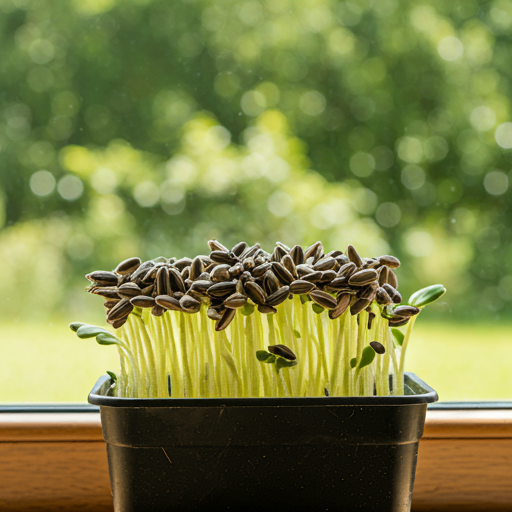Lavender for Bees: A Homesteader’s Guide to the Best Varieties

Hi there, fellow homesteaders! As a woman just starting my journey into self-sufficiency, I’ve been learning so much about the importance of pollinators, especially bees. And what better way to attract these buzzing little helpers than with a beautiful, fragrant lavender patch?
Lavender isn’t just stunningly beautiful and versatile in the kitchen and bath, it’s also a haven for bees! The delicate blooms are bursting with nectar, and the silvery foliage provides shelter. But with so many varieties of lavender out there, how do you choose the best ones for attracting bees?
Why Choose Lavender for Bees?
Bees are essential for our ecosystem, playing a vital role in pollinating crops and maintaining biodiversity. However, bee populations are declining worldwide, due to habitat loss, pesticide use, and climate change. Planting bee-friendly flowers like lavender is a simple yet powerful way to help these valuable insects thrive.
Here are some key reasons why lavender is a bee magnet:
- Rich Nectar Source: Lavender flowers are brimming with nectar, providing bees with a nutritious food source.
- Long Blooming Period: Many lavender varieties bloom for weeks, ensuring a continuous supply of food for bees throughout the season.
- Variety of Colors and Scents: Different lavender varieties offer a range of colors and scents, attracting a diverse range of bees.
- Low Maintenance: Lavender is relatively drought-tolerant and pest-resistant, making it an ideal choice for busy homesteaders.
Top Lavender Varieties for Bees
Now, let’s dive into the lavender varieties that will make your garden a buzzing paradise:
1. English Lavender (Lavandula angustifolia)
This classic lavender is a bee favorite! It features fragrant, purple-blue flowers and a compact, bushy habit. Some popular English lavender varieties for attracting bees include:
- ‘Munstead’: Known for its rich, sweet scent and long blooming period.
- ‘Hidcote’: This variety produces deep purple flowers and a strong, aromatic scent.
- ‘Lady Lavender’: A beautiful choice with delicate, pale purple flowers and a sweet fragrance.
2. French Lavender (Lavandula stoechas)
French lavender is known for its showy, colorful blooms and a distinct, slightly camphoraceous scent. It’s also a good choice for attracting bees, particularly bumblebees.
- ‘Provence’: This variety features large, purple-pink flower spikes with showy bracts (leaf-like structures) at the top.
- ‘Royal Velvet’: A striking choice with velvety, dark purple flowers and a strong fragrance.
- ‘Papillon’: This butterfly-like variety has colorful, ruffled bracts that make it particularly attractive to bees.
3. Spanish Lavender (Lavandula latifolia)
Spanish lavender is a vigorous, tall-growing variety with larger, more prominent flowers and a strong, camphoraceous scent. It’s a great choice for attracting bumblebees and other larger bee species.
- ‘Regal Splendour’: This variety features deep purple flowers and a strong fragrance. It’s known for its vigorous growth habit.
- ‘Giant Purple’: As the name suggests, this variety boasts large, purple flowers and a robust growth habit.
Tips for Creating a Bee-Friendly Lavender Patch
To maximize the bee-attracting potential of your lavender patch, consider these tips:
- Plant in Full Sun: Lavender thrives in full sun, which is also ideal for attracting bees.
- Choose a Well-Drained Location: Lavender prefers dry soil, so avoid planting it in areas with poor drainage.
- Plant in Groups: Planting lavender in clusters will create a more attractive habitat for bees.
- Avoid Using Pesticides: Pesticides can harm bees and other beneficial insects. Opt for natural pest control methods.
- Provide a Water Source: Bees need water to stay hydrated, especially in hot weather. A shallow dish of water with stones for perching can be a lifesaver for thirsty bees.
- Mix and Match Varieties: Planting a variety of lavender species will attract a broader range of bees and provide a longer blooming period.
The Joy of Bees and Lavender
As my homestead journey unfolds, I’ve discovered a deep appreciation for the intricate dance between bees and plants. By creating a bee-friendly lavender patch, I’m not only attracting these vital pollinators but also enjoying the beauty and fragrance of these wonderful flowers.
So, go ahead and plant some lavender! You’ll be rewarded with a vibrant, fragrant garden and the satisfaction of knowing you’re playing a role in supporting a healthy environment for bees and all the creatures they help to sustain.
Conclusion
From the classic English lavender to the vibrant French and Spanish varieties, there’s a lavender for everyone. By planting these bee-friendly options, you can create a haven for these important pollinators and enjoy the beauty and benefits of lavender in your homestead.
Remember, every small act, like planting a bee-friendly garden, contributes to a larger, healthier ecosystem. As I continue my homesteading journey, I’m committed to nurturing this connection with nature and supporting the bees that play such a vital role in our world.






